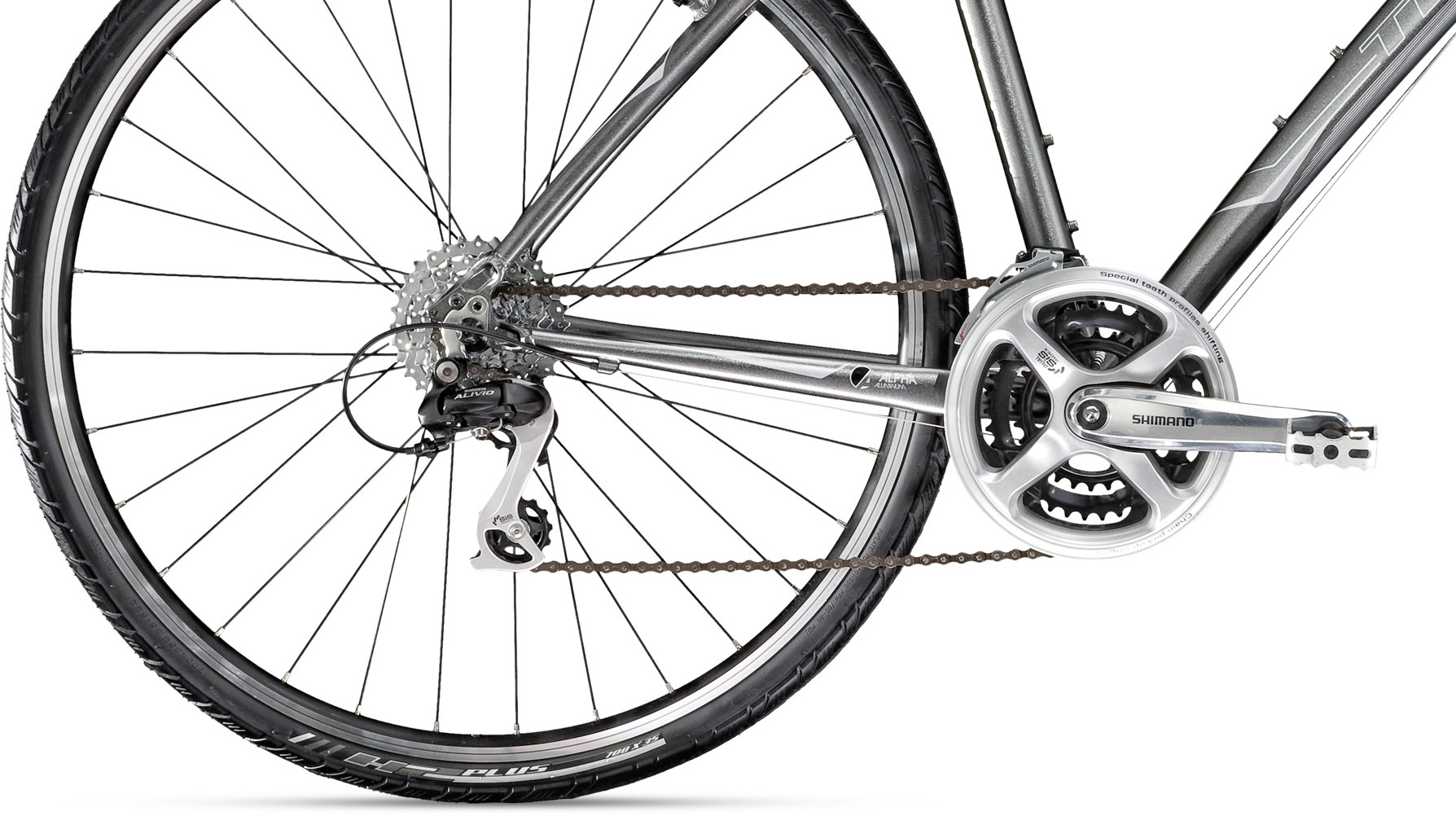
Gears
Gears will vary depending on the price off the bike, and while they can look very similar there are significant differences. Just like there are many varieties of say a Volkswagon car to suit different needs at different prices, there are many varieties of Shimano gears.
The first factor is the number of gears. They range from 6 – 11 sprockets (gears) at the rear and either 2 or 3 chain rings (gears) at the front. The total number of gears on a bike is calculated by multiplying the number of sprockets by the number of chain rings. For example 8 sprockets and 3 chain rings will give you 24 gears.
Cost is affected by both the number of gears and the quality of gear change, which improves dramatically as the price increases. Most gear systems are operated with cables. Shimano have recently introduced a battery operated system which requires no cables, but is very expensive at this stage so outside most Cycle to Work Scheme cycles.
Brakes
There are two types: rim brakes, or disc brakes. This refers to the part of the wheel where the brakes act. The main types of rim brakes are calliper brakes or ‘v’ brakes. Disc brakes can be cable operated or hydraulic.
Calliper brakes – found on all road bikes they increase in quality & decrease in weight as you go up the ranges.
‘V’ brakes – These are a basic brake for MTB and hybrid bikes. They offer good braking with great clearance around the tyre to stop mud clogging them up.
Mechanical disc – again found on MTB and hybrid bikes up to and around the £500 mark. The breaking is done on the disc which saves the rim from wear and tear. The pads on a mechanical disc brake will last up to 20 times longer than that on a ‘v’ brake, whilst also giving more powerful and progressive braking.
Hydraulic disc – Mostly found on hybrid and MTB over £500. They offer superior braking over the cable disc. Rather than being cable operated the brake line is filled with hydraulic fluid, working similar to cars brakes.






